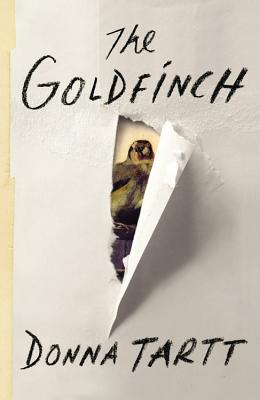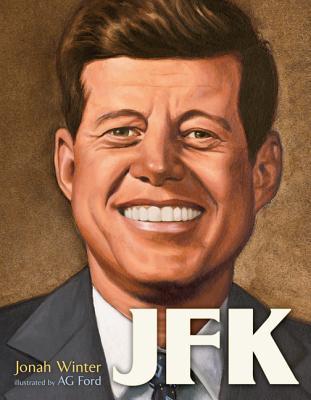Moving from 4th grade to 3rd grade has been fascinating as there is a big difference between the two ages. And I'm realizing again that 3rd grade readers are at a critical stage in reading development. As they are becoming more sophisticated readers, the books become more complex. Not only are they building stamina to read longer books over several days but they are also learning to infer so much about a story. Over the last few weeks I've been working with a small group on inferring problem and solution and I've learned so much from them. My thinking is that this cycle of lessons I've used with them might be the perfect cycle to use in whole class teaching early in the year next year.
I began working with several groups of students on inferring because although my students can infer isolated pieces in a text (what a word means in the context of a sentence, what a character meant by a phrase in a book, what might happen next, etc.), I am noticing a pattern that many of my students do not infer across the text and as texts become longer and more complex, this becomes more of a barrier to true comprehension. I'm finding students who can retell a story with every story part, but they miss some subtle thing that makes the story. Their inferring is at the basic level and they rush through-making up their mind fast without pausing to think about the whole. So, I planned a few lesson and have continued from there.
I always thought that problem and solution was a rather basic thing to teach but there are so many conversations that have come from it that I am realizing how important it is for 8 and 9 year olds.
DAY 1
We began with
Chalk
by Bill Thompson. This is a wonderful wordless picture book that I thought would make sense for inferring. I started out with inferring predictions with this group. We did a shared reading of the book as a group, talking and predicting using evidence from the pictures. Kids could predict basic things but it became evident that they were reading for isolated events rather than the whole bigger story. They seemed to pay close attention to minor details and went quickly over events that worked together to create a story. They didn't seem to have any focus in mind as they read that could help them put the pieces together.
DAY 2
I asked students to go off and read a wordless book on their own. I used
A Ball for Daisy Hippo! No, Rhino!
Hippo! No, Rhino!, and
Where's Walrus?
and each student left with one of these books I asked them to jot notes on stickies as they read.
We came back together to talk and their stickies confirmed my thinking from our reading of Chalk. I realized that these students were reading events but not reading for the whole story to come together in some way. I needed to help them read across a story. There were lots of stickies about little details not connected to the big story. I know that these are important for readers , but only if they can see how they fit into the bigger picture. So I changed my focus to problem and solution to give these students a way to focus--how to read across a story for the bigger picture in a story--more than isolated events in a sequence.
DAY 3
One thing that struck me in all of our conversations in the first two days was the fact that my students equated "ending" with "last page". Whatever the characters were doing on the last page was described as the ending by these students. I knew if I wanted to change the way they approached story, they needed to understand that the "ending" was not necessarily a final event but the solution or the outcome of the story. It wasn't always the very last thing that happened.
For the next lesson, I used the wordless book
Fossil
by Bill Thompson. This one is patterned similarly to Chalk so I figured the kids would be able to dig deeper and see the problem and solution more clearly after having read and discussed Chalk. For
Fossil, I asked students to focus on the big problem and the big solution and we talked through it. They were much better able to do this when they weren't jumping around to lots of unrelated details. Instead, they read with a focus in mind that they wanted to get a sense of the whole story.
In the meantime, during individual conferences, we also talked a bit about the book that each child was reading during independent reading. They were delighted to discover that the books they were reading had problems and that the longer the book, the longer it took to solve the problem!
DAY 4
I decided that once the kids knew that stories had problems and solutions, I wanted to give them ways to look at these more deeply. I wanted them to learn two strategies for thinking of problem and solution. One was that the title of a book is often a clue about the problem or solution. The other was that the main character often DOES something to solve the problem.
One thing I am noticing is that my students are often missing the subtle things that a character does to solve a problem. Often a character does something (like in Miss Nelson is Missing) that seems obvious to adult readers even though it is not stated in the story. I wanted my kids to read knowing that often characters did something deliberate to solve the problem and that readers sometimes read for that.
For this lesson, we read the book,
I Want a Dog!
. I picked this book for a few reasons. First of all, the problem was hinted to in the title. Second of all, the character does something very obvious to solve the problem and I knew my kids would see that. Finally, I knew that there were lots of books about kids who want pets and I wanted to be able to build on this lesson later in the study. So, "What did the character
do to solve the problem?" was the focus of this lesson and kids caught right on, excited to know this little trick for finding solution. (They acted like they were in on a big secret!) The focus was helpful as they weren't jumping all over the place, hoping the random details they noticed would somehow make sense to them.
DAY 5
Following I Want a Dog, I gave each student a copy of the picture book
A Small Brown Dog with a Wet Pink Nose
. This book is about a little girl who wants a dog but her solution is quite clever and the reader has to infer quite a bit to see how deliberate the little girl is throughout the story in order to solve her problem. I knew that understanding this might be a stretch but I knew that it was a good next step to really dig in and figure out what the character did.
MOVING FORWARD
Before I finish up with this group, I want to give them tools to go a little deeper into their understanding. I want them to see that problem and solution matters and that often a character changes over time because of the problem. I know that they are at the point that they are reading across a whole story now and they are ready to see the impact of the problem/solution on the characters. So my next few lessons with this group will be around the idea that
the main character often changes because of the problem they encountered and that readers often ask themselves, "How does the character change in the journey to solve the problem?" I have a few books in mind for this conversation and they are all three books that make sense as next steps and for this new focus:
Those Shoes
,
The Summer My Father Was Ten
, and
A Bad Case of Stripes (Scholastic Bookshelf)
are the three books I'll use next. I may only use one or two depending on how much support students need with this new idea.
REFLECTIONS

Planning for this group helped me to think about my planning for all small groups. I have been involved in lots of thinking around small group instruction at school. A group of teachers is meeting to discuss Jennifer Serravallo's book
Teaching Reading in Small Groups: Differentiated Instruction for Building Strategic, Independent Readers
and we have been involved in LLI training. I'm realizing that my small group instruction at 3rd grade needs to be as planned and focused as my whole group lessons. And they need to happen over more than a few days. Even though my groups are not really guided reading groups, they are strategy groups that need to move students to new behaviors quickly. When I started thinking about this group, the change they needed seemed too big to happen in a short time, but when I really looked at the students' behaviors and what they had in place, I was able to break the idea down into smaller chunks and change behaviors quickly. My students quickly learned to read across a story, to find the problem and solution and to focus on character actions. Next I am confident that they will be able to see the changes a character has on their journey in the story. These little behaviors have changed in a two week period and has transferred to their independent reading so that they are more engaged and thoughtful readers.
These kids are not necessarily struggling readers but they are struggling with this idea and it is keeping them from truly understanding what they read . I am all about discovery, but sometimes kids need some ways into discovery. They need to know what to read for and some things to remember as readers. Then when they move into complex texts they know these things will hold true and that's where the real thinking and discovery comes in. I've been careful to choose books that really make visible the things I want them to see that are true of many stories so that they differently on their own. In less than 2 weeks, they've changed their expectations of story.
I am rethinking small groups to be a bit longer than usual (over 2-ish weeks) to really change several behaviors that add up over time. This cycle has taught me a lot about what transitional readers need and about how to better plan small group instruction so that in a short period of time, students can become more independent readers.



























